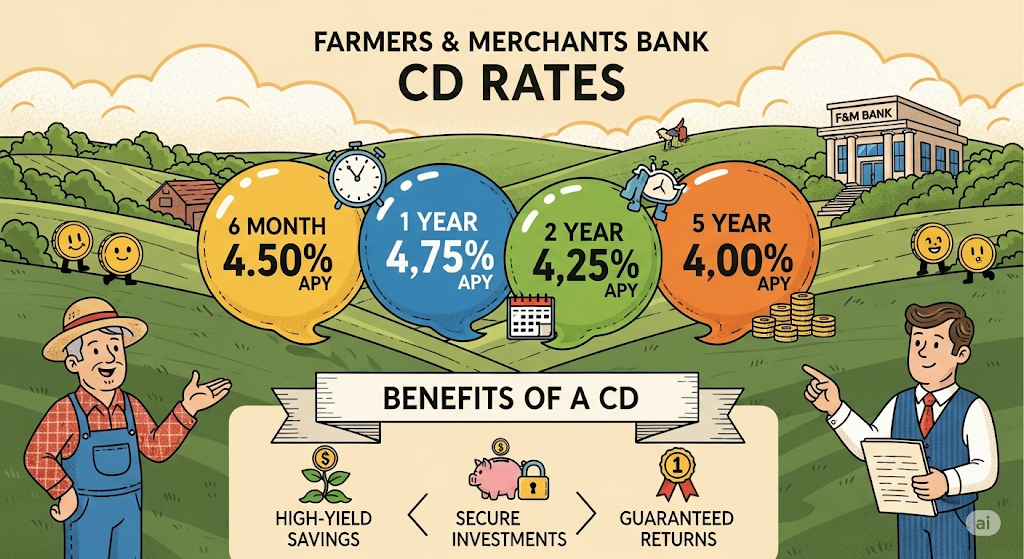
car model,calculator and coins on white table Many people struggle to save enough money for a car down payment, which can be a significant hurdle to owning a vehicle. Fortunately, automobile down payment assistance programs exist to help eligible individuals cover this upfront cost. These programs, offered by state agencies, non-profits, and car dealerships, provide financial aid or low-interest loans specifically designed to ease the burden of a down payment.
Assistance may come in different forms, such as grants, matched savings programs, or dealership incentives linked to manufacturers or finance companies. By reducing the initial cost, these options improve access to reliable transportation, especially for low-income families or those facing credit challenges.
Understanding how to find and qualify for these programs can make a substantial difference in securing a vehicle. Exploring local resources, government initiatives, and charitable organizations often uncovers valuable support that is not widely advertised.
Understanding Automobile Down Payment Assistance
Automobile down payment assistance helps many prospective buyers overcome the initial upfront cost barrier to purchasing a vehicle. It involves specific programs that provide financial support for a down payment, with varying eligibility requirements and program types aimed at different buyer needs.
Definition and Purpose
Automobile down payment assistance refers to financial aid that covers part or all of a car buyer’s initial down payment. This support lowers the upfront cost, making vehicle ownership more accessible, especially for individuals with limited savings or credit challenges.
The purpose of these programs is to reduce financial stress and expand access to auto financing. By easing the down payment burden, buyers increase their chances of loan approval and often receive better loan terms.
How Down Payment Assistance Works
Typically, down payment assistance is offered through dealerships, finance companies, or manufacturers. The assistance can come in the form of grants, loans, or deferred payments that cover or reduce the buyer’s upfront down payment requirement.
Buyers usually apply for assistance during the financing process. Once approved, the funds are directly applied toward the vehicle’s down payment, reducing the amount the buyer must pay out of pocket. Some programs partner with dealerships to streamline this process and attract more buyers.
Eligibility Criteria
Eligibility varies by program but often includes income limits, credit score minimums, and residency requirements. Certain programs target specific groups such as veterans, low-income individuals, or first-time buyers to prioritize those with greater financial need.
Applicants generally need to provide proof of income, identity, and sometimes employment status. Some programs may restrict assistance to purchasing specific vehicle types or models to align with program goals.
Types of Assistance Programs
There are several types of automobile down payment assistance:
- Grants: Funds that don’t require repayment, often provided by nonprofits or government entities.
- Loans: Low or zero-interest loans repayable over time, sometimes with flexible terms.
- Manufacturer or Dealer Incentives: Financial support offered directly by carmakers or dealerships, sometimes bundled with financing deals.
- Hybrid Programs: Combine grants and loans or include additional benefits like waived fees.
Each program type serves different buyer situations, emphasizing either immediate financial relief or manageable long-term repayment.
Major Down Payment Assistance Programs and Payment Methods

Automobile down payment assistance often involves specific programs and structured payment methods tailored to ease upfront costs. These programs vary by eligibility, funding sources, and repayment options, addressing different financial situations. Understanding the main payment options and assistance pools helps potential buyers choose the best fit for their needs.
Supernova Payment Options
Supernova payment options focus on flexible financing that covers down payments through direct assistance or partnerships with dealerships. Typically, the Supernova program collaborates with auto manufacturers and finance companies to provide eligible buyers with funds that reduce or fully cover the initial down payment.
Participants usually apply through affiliated dealerships or online platforms linked to Supernova. The payment plans may include deferred payment schedules or low-interest credit terms. This method targets buyers who struggle with upfront costs but maintain reasonable credit or income qualifications.
Automatic Payment Pools
Automatic payment pools consolidate resources from public and private funders to support down payment aid programs. These pools operate at state or local government levels, pooling grants and subsidies to make assistance broadly available.
Applicants must meet criteria such as income limits or residency requirements to access these funds. Once approved, payments are often distributed automatically to the lender or dealership to directly reduce the buyer’s required down payment. This automated approach improves efficiency and reduces the risk of misuse or delays.
Comparing Popular Program Features
| Feature | Supernova Payment Options | Automatic Payment Pools |
|---|---|---|
| Eligibility | Credit-based, income thresholds | Income and residency-based |
| Payment Method | Direct grants, deferred payments, low interest | Direct payments to lender or dealership |
| Application Process | Dealership or online-affiliated applications | State/local government or nonprofit applications |
| Flexibility | Moderate, dependent on finance partnerships | High, covers various buyer profiles |
| Repayment Terms | Sometimes deferred or interest-bearing | Typically grant-based, no repayment required |
Both program types aim to reduce financial barriers but differ in structure. Supernova options offer targeted assistance linked to financing deals, while automatic payment pools rely on wider funding sources with fewer repayment obligations. Choosing the right program depends on the buyer’s credit, income, and local availability of funds.
How to Qualify and Apply for Automobile Down Payment Assistance
Qualifying for automobile down payment assistance typically requires meeting specific financial criteria and submitting proper documentation. The approval process involves verification of eligibility and program limitations vary by provider, including income thresholds and vehicle type restrictions.
Application Requirements
Applicants usually need to demonstrate financial need, often based on income limits tied to federal poverty guidelines or area median income. Many programs prioritize low- to moderate-income individuals or families. Some assistance targets specific groups, such as veterans or first-time car buyers.
Other common requirements include residency in the program’s service area and a valid driver’s license. Applicants may also need a pre-approval or conditional approval from a lender or dealership. Programs sometimes require applicants to attend financial counseling or budgeting sessions before receiving aid.
Documentation Needed
Essential documents often include proof of income like pay stubs, tax returns, or benefit award letters. A government-issued ID and proof of residency, such as a utility bill or lease agreement, are also standard.
Applicants may need to provide credit reports or information about existing debts. When working through dealerships, buyers might have to show vehicle purchase agreements or loan pre-approval letters. Some programs request additional paperwork verifying veteran status or participation in community assistance programs.
Approval Process
After applying, the program reviews submitted documents for eligibility confirmation. This process can take from a few days to several weeks, depending on the organization’s speed and complexity.
If approved, the assistance may come as a grant, a low-interest loan, or a voucher applied directly to the car’s down payment. The applicant will receive terms outlining repayment if applicable. Denials often relate to income exceedance, incomplete documentation, or failure to meet residency requirements.
Program Limitations
Most programs limit assistance amounts, often capping down payment aid between $500 and $3,000. Funds typically apply only to new or used vehicles meeting set criteria, such as price limits or fuel efficiency standards.
Many assistance programs exclude luxury or specialty vehicles. There may be restrictions on credit scores, with some requiring a minimum threshold. Additionally, some programs are one-time offers, not designed for repeat use by the same individual or family.
Financial Implications and Considerations

Automobile down payment assistance can influence several aspects of a car purchase beyond the initial payment. It affects monthly payments, credit qualifications, and the overall cost structure of the loan.
Impact on Monthly Payments
A larger down payment reduces the amount financed, directly lowering monthly payments. When assistance programs cover part or all of the down payment, buyers can benefit from more affordable monthly costs.
Lower monthly payments can improve cash flow and reduce the chance of late fees or defaults. However, if down payment assistance is viewed as a loan or requires repayment, those terms must be factored into the monthly budget.
For buyers using credit union business credit cards or other financing methods to cover down payments, balancing repayment terms is essential. Mismanaging credit card charges can lead to credit card abuse charges, adding financial stress.
Credit Score Requirements
The size of the down payment often correlates with credit score requirements. Larger down payments may compensate for lower credit scores by reducing lender risk. Assistance programs that lower the initial payment can help those with modest credit access better loan terms.
Lenders scrutinize credit history and scores closely, especially for auto financing. Candidates with higher scores typically qualify for better interest rates and loan conditions. Using credit union financing options often offers more lenient credit thresholds compared to traditional lenders.
Interest Rates and Loan Terms
Down payment assistance can indirectly influence the interest rate applied to the car loan. A substantial upfront payment signals lower risk, often resulting in more favorable interest rates. This can reduce the total amount paid over the life of the loan.
Loan term length also interacts with down payment size. Smaller down payments often lead to longer loan durations or higher rates to offset lender risk. Borrowers should evaluate terms carefully, particularly when assistance programs impose conditions or fees.
Understanding terms like US debit vs Visa debit is important if covering payments through bank cards, as some may have transaction limits or fees affecting overall costs.
Alternative Financing Options for Car Buyers
Car buyers facing challenges with traditional down payment methods can explore several alternative financing tools. These options involve leveraging credit resources connected to business or real estate assets, offering different terms and benefits depending on eligibility and financial standing. Understanding each option helps buyers select the most suitable path for vehicle financing.
Unsecured Business Lines of Credit
An unsecured business line of credit allows eligible businesses to access funds without collateral, which can be used toward a car down payment. Providers like Coast Hill offer such credit lines that business owners can draw from flexibly based on their cash flow needs.
These lines typically have variable interest rates and a revolving balance, enabling repeated borrowing up to a set limit. While unsecured, lenders often require good credit history and proof of business revenue.
This option is ideal for individuals who own businesses with regular income but prefer not to tie up physical assets. Additionally, payments and interest may be tax-deductible if used for business-related vehicle purchases.
Home Equity Loan Utilization
Home equity loans in second position, such as those available in Daly City, tap into the borrower’s accumulated home value to fund a car down payment. This option involves borrowing a lump sum secured by the homeowner’s equity.
Rates tend to be lower than unsecured personal loans due to collateral backing, and terms can extend from 5 to 15 years. However, failing to repay risks foreclosure of the property.
It suits buyers who have considerable equity and steady income but face challenges with traditional auto financing. The fixed interest rates also provide predictable monthly payments advantageous for budgeting purposes.
Real Estate Line of Credit
A real estate line of credit, often a revolving credit option, combines features of a home equity loan and a credit card. Borrowers tap into home equity repeatedly without reapplying for credit each time.
This credit line has flexible draw amounts, allowing car buyers to fund their down payment as needed. Interest applies only on the amount drawn, which may reduce overall cost compared to a lump sum loan.
Guidance line of credit programs often assist buyers leveraging real estate assets responsibly. Approval requires property appraisal, creditworthiness, and income verification, limiting eligibility to established homeowners.
Business Debit Card Options
Some business debit cards, including those linked to credit unions or major banks, offer financing advantages when used properly. Unlike personal cards, certain business debit cards allow direct access to business funds without incurring debt.
Car buyers may use these cards to allocate cash reserves toward a down payment instantly. However, these cards generally do not build credit, limiting long-term financing benefits.
Careful separation of personal and business expenses is crucial, as misuse can cause tax and bookkeeping complications. Business credit cards, by contrast, can aid in establishing credit history while providing rewards and purchase protections useful for large expenses like vehicles.
Managing Payments and Avoiding Financial Pitfalls
Proper management of automobile down payment assistance and ongoing payments requires careful attention to payment tools, timeliness, and legal implications. Understanding how to use payment methods wisely, avoid falling behind, and stay informed about legal risks can protect financial stability and credit standing.
Credit Card and Debit Card Usage Best Practices
Using credit or debit cards for car payments demands disciplined financial habits. Individuals should avoid accumulating high balances that exceed their ability to pay, as this can trigger a credit card abuse charge and damage credit scores.
Reconciliation is critical. Utilizing credit card reconciliation software can help monitor payments, detect errors, and ensure all transactions align with statements. This reduces risk of missed payments or disputes.
It’s advisable to prioritize debit cards for regular payments when possible, as they draw from available funds and prevent debt buildup. However, cardholders should verify their bank’s policies on payment timing to avoid overdraft fees.
Avoiding Payment Delinquency
Delinquent payments can lead to escalating fees and impact credit ratings. To reduce this risk, setting up automatic payments or reminders is effective for staying current on obligations.
If a borrower encounters financial hardship, they should contact their lender immediately to explore options such as payment deferments or hardship programs. Many lenders offer these as temporary relief measures.
Maintaining clear records of all payments and communication with the lender provides crucial documentation in case of disputes. Missing payments repeatedly may result in repossession or increased loan interest.
Legal Risks Related to Non-Payment
Failing to pay car loans carries legal consequences. While some contracts contain clear payment terms, it’s important to know that a contractor or lender can sue for non-payment even without a formal contract if there is evidence of an agreement.
Legal actions often begin with late notices, then escalate to collection efforts or lawsuits. Borrowers should understand that non-payment can lead to judgments against them, wage garnishments, or vehicle repossession.
To mitigate risks, individuals should respond promptly to creditor communications and seek legal advice if threatened with litigation. Being proactive reduces the likelihood of costly legal outcomes.
State and Special Assistance Programs

Automobile down payment assistance programs vary significantly by location, with some states offering targeted financial help and tax considerations. Regional differences affect eligibility, funding, and types of support, making it essential to understand local options.
Oregon Assistance and Tax Considerations
Oregon offers specific down payment assistance tied to income qualifications and regional needs. Residents may access programs designed to lower upfront costs when purchasing a vehicle, particularly for low-income families and essential workers.
Tax implications also play a role. Oregon requires estimated tax payments on certain income levels, which can influence the net affordability of assistance programs. While direct tax credits for vehicle down payments are uncommon, understanding state tax obligations helps applicants plan their finances effectively.
Additionally, some Oregon programs coordinate with local financial institutions, allowing applicants to combine assistance with home equity loans or lines of credit for broader financial support. This is relevant for individuals who also manage home equity loans or HELOCs, ensuring balanced debt management.
Regional Differences in Assistance Availability
Assistance availability varies widely across regions, influenced by state budgets, local policies, and nonprofit involvement. Some states provide low-interest loans or matched savings programs, while others focus on direct grants or vehicle donations.
For example, states like California integrate down payment help with incentives for electric and hybrid vehicles, pairing grants with favorable loan rates. Conversely, states like Connecticut, Kansas, and Virginia show variations in home equity loan and HELOC rates that affect overall financial strategies for vehicle purchases.
Local dealerships and manufacturers also contribute differently by region. In some areas, veteran-owned businesses or special projects offer targeted programs, impacting access based on geographical and demographic factors. Understanding these variations helps applicants identify the best financial aid sources in their state or locality.
Legal and Security Aspects of Automobile Down Payment
Automobile down payments involve legal standards and security practices designed to protect both buyers and sellers. Understanding these rules helps prevent fraud, ensures compliance with financial obligations, and safeguards personal information throughout the transaction.
Fraud Prevention and Security Measures
Dealerships and lenders implement several measures to prevent fraud during down payment transactions. Verification of identity is standard, often requiring a government-issued ID and proof of income. Electronic payments are preferred for traceability and security.
Buyers should use payment methods with fraud protection, such as credit cards or secure bank transfers. It is also crucial to review the retail installment sales contract carefully, ensuring all terms regarding down payments and refunds are clear.
Fraud can include false documentation or unauthorized use of funds. Dealers and lenders rely on background and credit checks to catch discrepancies early. Buyers should protect themselves by monitoring accounts closely and reporting suspicious activity immediately.
Statute of Limitations on Auto Loan Defaults
The statute of limitations on auto loan defaults varies by state but is commonly between three to six years for contract enforcement. In Georgia, for example, the statute for credit-related debts is generally six years.
This time frame begins from the date of the last payment or default and limits the period during which creditors can sue for unpaid balances. After this period, the debt may remain but cannot be legally enforced in court.
Buyers should be aware that failing to make scheduled down payments can trigger default. However, lenders must act within the statute limits to recover owed amounts. Knowing these limits helps consumers negotiate or contest debts that may be time-barred.
Protecting Personal and Financial Information
Securing personal data during down payment transactions is critical. Payment details and credit information must be handled using encryption and secure channels to avoid breaches.
Proper security measures include:
- Using strong passwords and two-factor authentication on accounts linked to payments
- Monitoring debit and credit card statements for unauthorized charges
- Avoiding public Wi-Fi when accessing financial information
Credit card companies generally cannot place liens on a consumer’s home for unpaid auto loans or down payments. However, unpaid debts can affect credit scores and lead to wage garnishment or asset seizure under certain circumstances.
Vigilance in protecting sensitive data reduces risks such as identity theft and unauthorized transactions during the auto purchase process.




